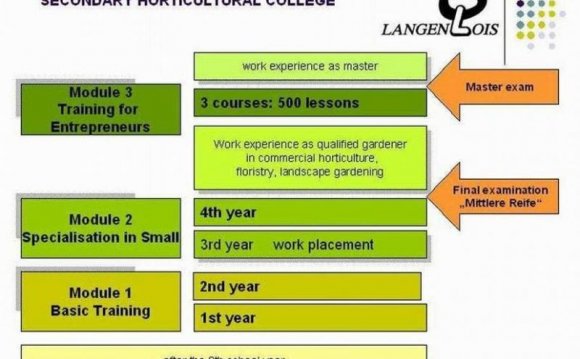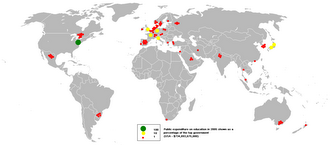
With dictionary look up - Double click on any word for its definition.
This section is in advanced English and is only intended to be a guide, not to be taken too seriously!
England
Education in England may differ from the system used elsewhere in the United Kingdom .
Basically, there are two systems: one covering England, Wales and Northern Ireland and one covering Scotland. The two education systems have different emphases. Traditionally the English, Welsh and Northern Irish system has emphasised depth of education whereas the Scottish system has emphasised breadth. Thus English, Welsh and Northern Irish students tend to sit a small number of more advanced examinations and Scottish students tend to sit a larger number of less advanced examinations. It should be noted that local English practice can vary from this general picture although Scottish practice is well nigh universal.
Education in Wales
Nowadays education in Wales differs slightly from the system used in England. The statutory national key stage tests in Wales were, until 2000, the same as in England and were managed by the School Curriculum and Assessment Authority (SCAA). In 2000, the National Assembly for Wales took responsibility for these tests in Wales, at which point they were developed by test agencies on behalf of the Awdurdod Cymwysterau, Cwricwlwm ac Asesu Cymru (ACCAC), whilst the tests in England were developed for the Qualifications and Curriculum Authority (QCA). In 2002, the Welsh Assembly decided to cease the tests at Key Stage One. Instead, optional teacher assessment materials were provided to schools in 2003 for use in English, mathematics and Welsh . These had been adapted from materials that had originally been developed by the National Foundation for Educational Research (NFER) and the other test agencies to be used as statutory assessment materials for 2003. At the end of 2003, the Daugherty Report was commissioned by the Welsh Assembly to undertake a review of the country's assessment procedures. The interim report by the committee was perceived by the media as supporting a complete abolishment of the assessments at key stages two and three.
The school years in England and Wales
In general, the cut-off point for ages is the end of August, so all children must be of a particular age on the 1st of September in order to begin class that month.
Primary Education Infant School or Primary School Reception, age 4 to 5 Year 1, age 5 to 6 Year 2, age 6 to 7 (KS1 National Curriculum Tests - England only) Junior School or Primary School Year 3, age 7 to 8 Year 4, age 8 to 9 Year 5, age 9 to 10 Year 6, age 10 to 11 (Eleven plus exams in some areas of England, Key Stage 2 National Curriculum Tests) Secondary Education Middle School, High School or Secondary School Year 7, old First Form, age 11 to 12 Year 8, old Second Form, age 12 to 13 Year 9, old Third Form, age 13 to 14 (Key Stage 3 National Curriculum Tests, known as SATs (Standard Assessment Tests)) Upper School or Secondary School Year 10, old Fourth Form, age 14 to 15 Year 11, old Fifth Form, age 15 to 16 (old O Level examinations, modern GCSE examinations) Upper School, Secondary School, or Sixth Form College Year 12 or Lower Sixth, age 16 to 17 (AS-level examinations) Year 13 or Upper Sixth, age 17 to 18 (A2-level examinations. Both AS-levels and A2-levels count towards A-levels .)In some regions of England, pupils attend a Lower (Primary) School before going to, a Middle School between 8 and 12 or, more commonly 9 and 13, and then a High School or Upper School. Other, more vocational qualifications offered including GNVQs and BTECs .
Education in Scotland
Education in Scotland differs from the system used elsewhere in the United Kingdom . Basically, there are two systems: one covering, , or and one covering Scotland . The two education systems have different emphases. Traditionally, the English, Welsh and Northern Irish system has emphasised depth of education whereas the Scottish system has emphasised breadth. Thus English, Welsh and Northern Irish students tend to sit a small number of more advanced examinations and Scottish students tend to sit a larger number of less advanced examinations.
The school years in Scotland
Nursery School Primary School Primary 1, age range 4 - 6. Primary 2, age range 5 - 7. Primary 3, age range 6 - 8. Primary 4, age range 7 - 9. Primary 5, age range 8 - 10. Primary 6, age range 9 - 11. Primary 7, age range 10 - 12. Secondary School First year, age range 11 - 13. Second year, age range 12 - 14. Third year, age range 13 - 15. Fourth year, age range 14 - 16. Fifth year, age range 15 - 17. Sixth year, age range 16 - 18.Note that the age ranges specify the youngest age for a child entering that year and the oldest age for a child leaving that year. Also note that children may leave school at the end of any school year after they reach 16 years of age and that they may attend Scottish universities when they are 17. Therefore two sets of national examinations are held. The first set, the Standard Grade examinations, take place in the Fourth year of secondary school and show basic education level. The second set, the Higher examinations take place in the Fifth and Sixth years. A third level, Advanced Higher, is sometimes taken by students intending to study at an English university, or those wishing to pass straight into second year at a Scottish university, and covers the gap between the Scottish "Higher" level and the English "Advanced" level courses, although there is not always a one-to-one mapping.
RELATED VIDEO




 State school is an expression used in Australia, New Zealand, South Africa, and the United Kingdom to distinguish schools provided by the government from privately run schools.
State school is an expression used in Australia, New Zealand, South Africa, and the United Kingdom to distinguish schools provided by the government from privately run schools.







